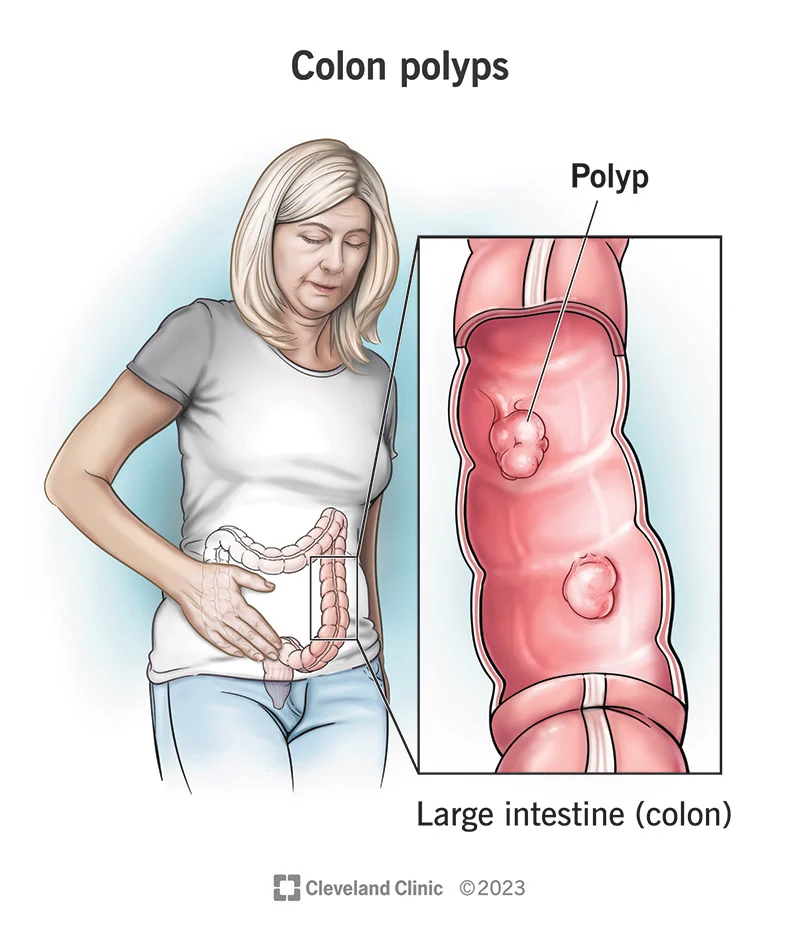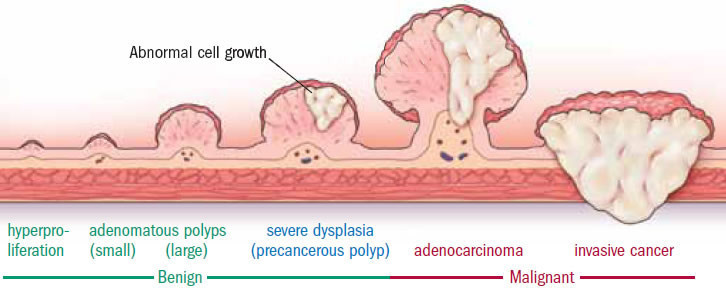Colon polyps may seem inconspicuous, but they hold a critical role in the realm of health. According to Dr. Fola May, a distinguished gastroenterologist, and associate professor of medicine at UCLA, “Not all colon polyps are cancerous, but all colon cancer starts as a polyp,” making it imperative for everyone to comprehend their significance and undergo regular screenings.
Demystifying Colon Polyps: What You Need to Know

Colon polyps are growths that emerge on the inner lining of the large intestine or rectum, ranging from small, flat bumps to larger, mushroom-shaped structures. Despite their prevalence, with estimates suggesting 15% to 40% of adults have them, their potential to turn cancerous underscores the need for vigilance.
Types of Colon Polyps
Understanding the three main types of colon polyps is crucial:

- Adenomatous Polyps: The most common and likely to become cancerous.
- Hyperplastic Polyp and Inflammatory Polyp: Common but typically noncancerous.
- Sessile Serrated Polyps and Traditional Serrated Adenomas: Higher risk of being cancerous.
Symptoms of Colon Polyps
While most polyps remain asymptomatic, larger ones can manifest symptoms. Awareness of these signs is crucial:
- Blood in Stool or Rectal Bleeding: Bright red blood may indicate bleeding from an irritated polyp.
- Anemia: Large polyps can lead to blood loss, resulting in a low red blood cell count and fatigue.
- New Diarrhea or Constipation: Persistent changes in bowel movements warrant attention.
- Unexplained Weight Loss: A hallmark sign of advanced-stage colorectal cancer.

- Abdominal Pain or Discomfort: Consistent cramping or pain, especially when coupled with other symptoms, may indicate polyps.
- Fatigue and Weakness: Anemia-induced fatigue, particularly if accompanied by rectal bleeding.
- Shortness of Breath: Anemia-related oxygen depletion can lead to breathlessness.
- You Can’t Feel Them: Contrary to a common myth, you cannot palpitate or feel polyps externally.
Dr. May emphasizes the necessity of regular screenings, starting at age 45, as the only way to diagnose and remove polyps is through a colonoscopy. Early detection is paramount, as even small, seemingly inconspicuous polyps can evolve into a significant health concern.
Conclusion: Empowering Health through Knowledge
In conclusion, understanding the nuances of colon polyps empowers individuals to prioritize their health. Regular screenings, coupled with awareness of potential symptoms, form a robust strategy in the fight against colorectal cancer. As we unravel the mysteries of these seemingly innocuous growths, we pave the way for a healthier and more informed future.